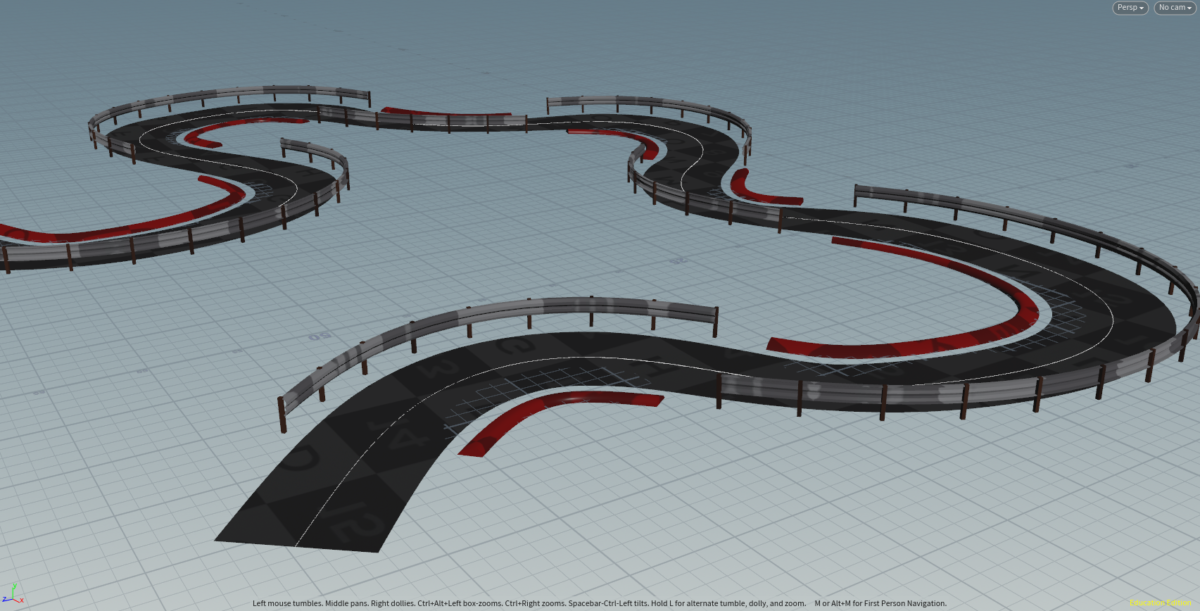Preface
Hey everyone! As the beginning of Fall Semester marks the end of Summer, I thought I should make a blog post detailing all the fun stuff I worked on over the summer!
Champlain’s curriculum for Sophomore year marks the end of general Game Art classes. During the Junior and Senior year, you begin to focus on your specialization. Up until Spring semester 2022 the content of my portfolio was entirely traditional modeling and 3D sculpting. If I wanted to have a portfolio to showcase for 2023 summer internships (of which open for applications at the end of August) I was going to have to create a new portfolio from scratch and learn the ins and outs of Tech Art.
Henry’s Tech Art Resource Hub
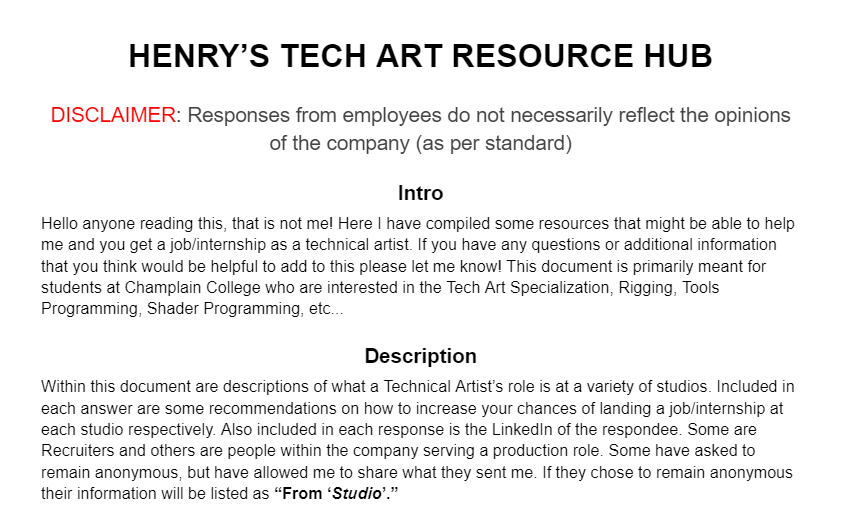
What originally started out as a makeshift summer curriculum and gaming recruiter note sheet morphed into a full 14-page document on everything Tech Art. I wanted to know what I should be preparing for as I submit my application for internships. In finding out I learned enough about the discipline of Tech Art I figured that it might be useful for others to know! A link to the blog post can be found here.
Intro to Houdini
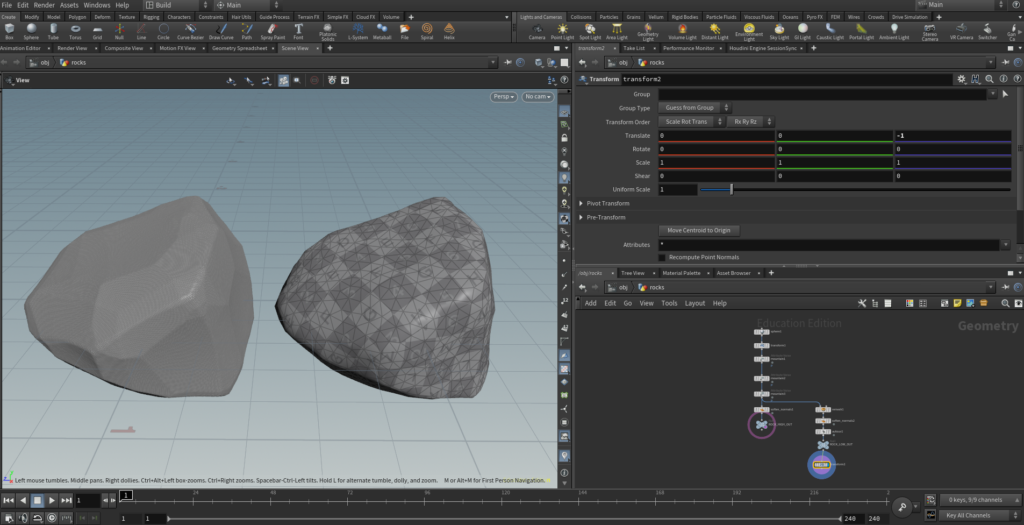
Thanks to a super helpful professor (Shoutout Professor Patel!) I was able to gain access to some advanced coursework videos to help me better understand Houdini. That combined with Houdini releasing its education edition for $75/yr gave me plenty of opportunity to get a head start on one of the coolest 3D programs out there.
C++ Learning
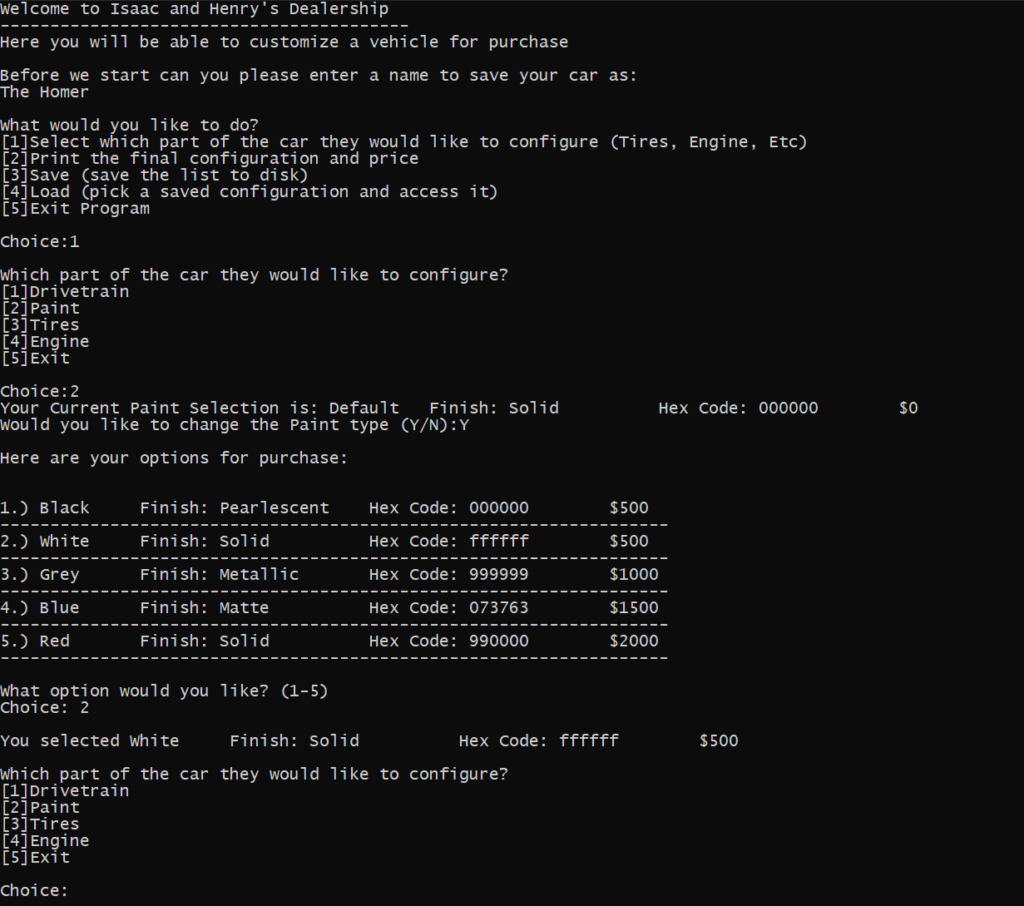
Early in the summer I took an advanced C++ coding course outside of my normal Champlain curriculum. In this course I learned more about topics such as Dynamic Arrays, Pointers, Memory Allocation and Polymorphism. For the final project I worked with another student to create a car configuration tool similar to those seen on Tesla.com. It was a challenging experience as I am still fairly new to coding, but I learned so much and I feel much more confident.
Procedural Scattering and Terrain
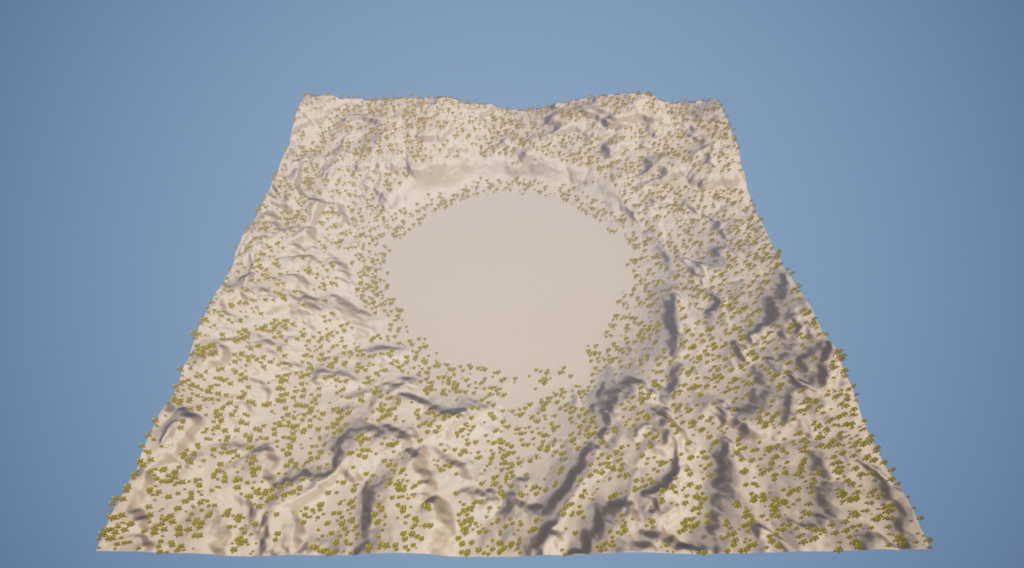
My next foray into Houdini was learning about scattering and terrain generation. I went through Artstation’s tutorials and was able to create my first Procedural Scattering HDA in Unreal. I also learned some basics for Terrain Generation within Houdini.
Unreal Learning
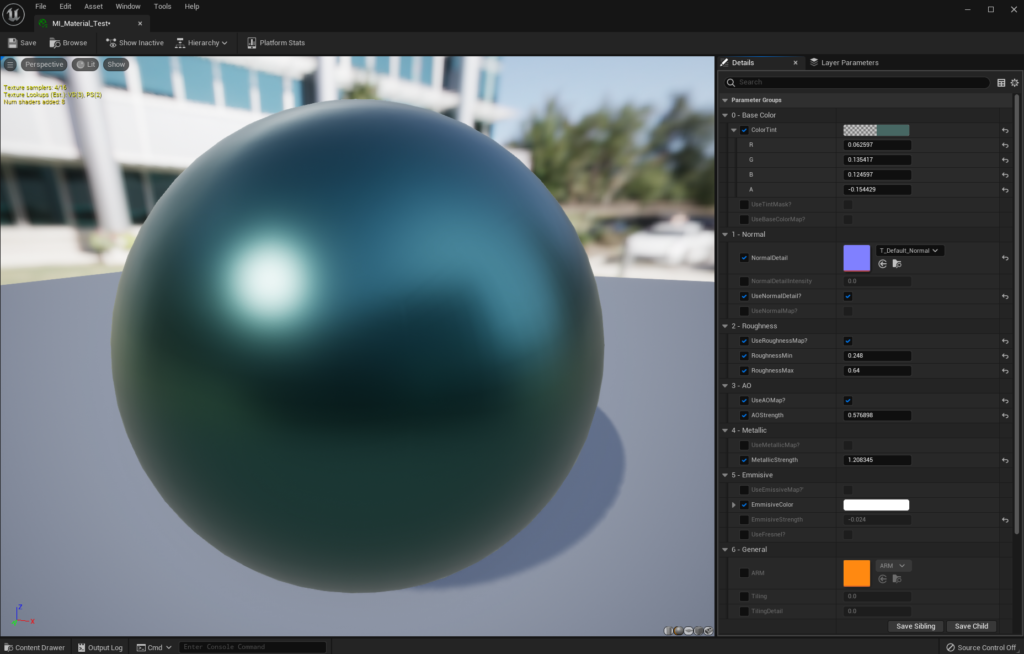
I spent a significant chunk of the summer diving into Unreal Engine 5 to learn the software. My first but of learning came through using the Material Editor in Unreal. I learned how to create a Master Material and integrate Blueprints into material creation. I also familiarized myself with the Houdini Engine plugin by making several HDAs to be used within Unreal. I did some lighting tests in collaboration with my AGP team ‘Manas’. Speaking of…
‘Manas’ and USC
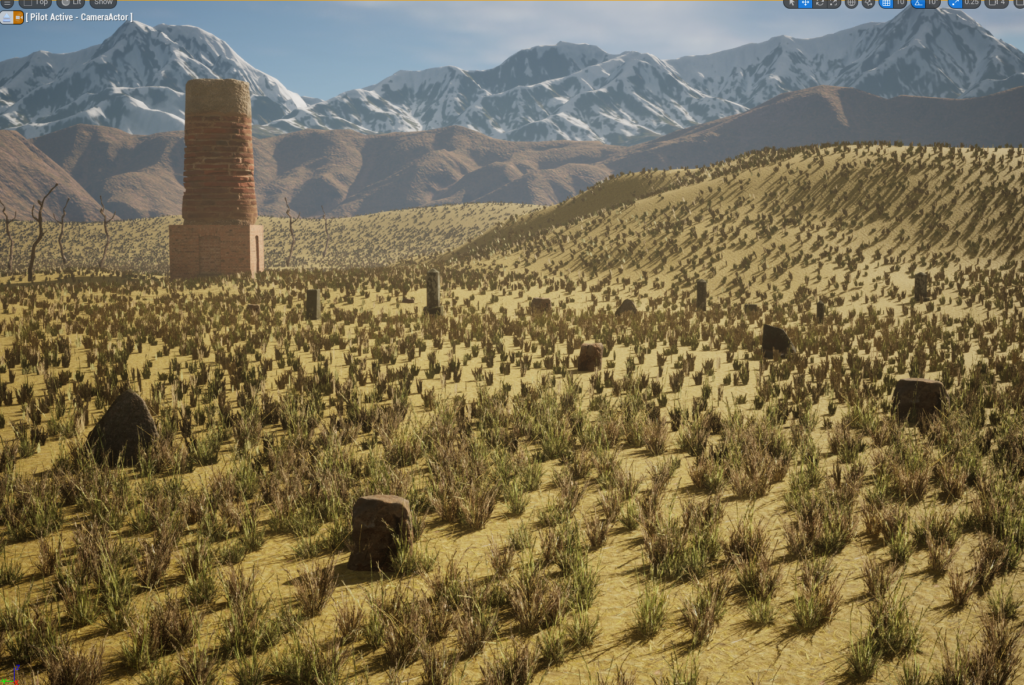
Over the summer I joined an AGP team at USC. AGP is USC’s big gaming capstone in which teams create a playable game to be presented at the end of the year. ‘Manas’ headed by Omar Uraimov is the first game at USC to be entirely made within UE5. I joined the team as a Tech Artist and Procedural Modeling Lead. I worked with lead Art Producer Haotian Zhang to create some scattering, lighting and grass prototypes.
Creativity and AI

One of the coolest projects that I got to work on was hosted by the Emergent Media Center at Champlain College. This project centered around creating an exhibit prototype that showcased the intersection of Creativity and Artificial Intelligence. I created a prototype in Unreal Engine that allowed multiple “people” to interact with AI generated images. I plan on doing a blog post about this in the near future.
Advanced Houdini
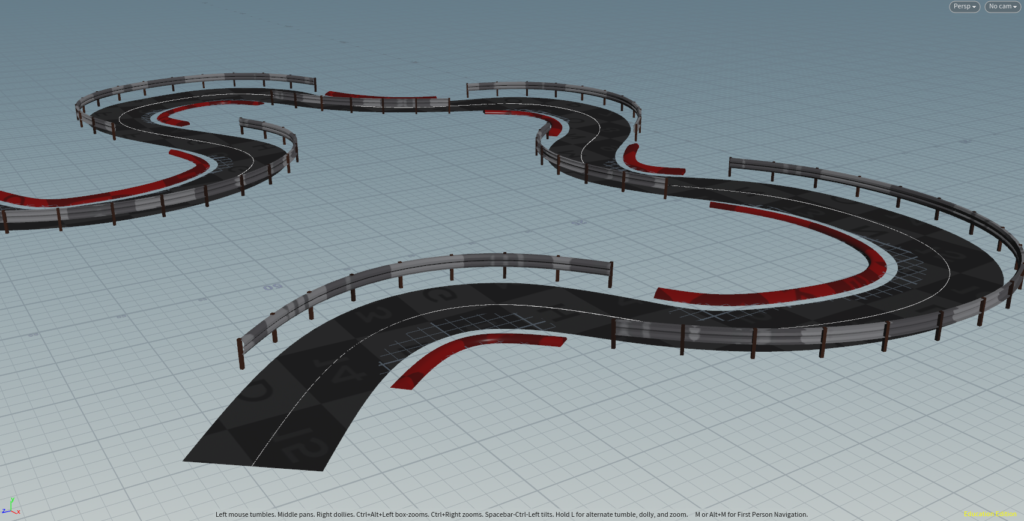
I spent the last half of the summer really honing in on some of the Houdini skills I learned earlier in the season. I focused my time on two projects: a stone wall generator, and a racetrack generator, both of which would be used as tools in Unreal Engine 5. I also spent this period getting myself used to Houdini’s coding language VEX. These were both very daunting projects and I had thought that perhaps I bit off more than I could chew. But I put my nose to the grindstone and came up with some really neat results. Both of these projects will have dedicated Portfolio Pieces and Art Breakdown blog posts about them in the near future.
Summary
Overall, this summer was full of amazing learning opportunities. I learned so much and pushed myself out of my comfort zone several times. I can’t wait to take what I’ve learned into the Fall semester and really hone my craft as internship season really kicks into full swing. Thank you for taking the time to read and I hope you enjoyed it!
